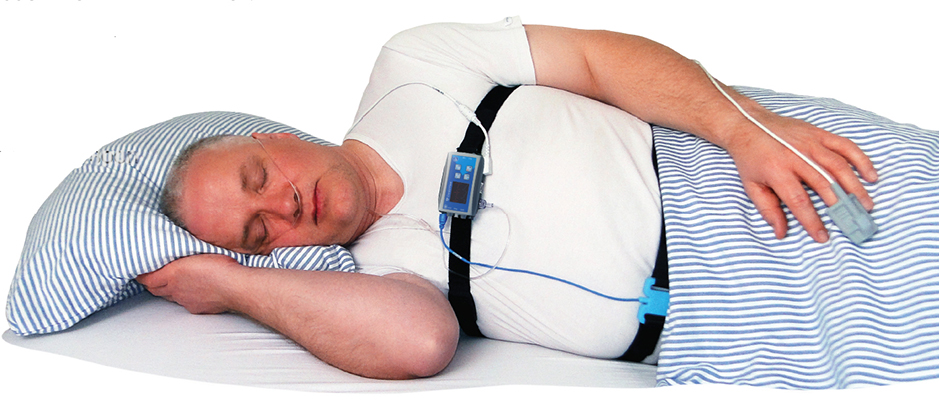- +1 800 433 4609
- |
- Request Info
- |
- Login
Better days start with better nights.
Empower your patients with sleep quality insights.
What is Sleep Apnea?
Sleep apnea (AP-ne-ah) is a chronic condition in which a patient stops breathing one or more times during sleep, or begins breathing very shallowly. Eventually, normal breathing starts again, sometimes with a loud snort or choking sound.
The severity of sleep apnea varies greatly. Breathing pauses can last from a few seconds to minutes. They may occur a few times a night, or more than 30 times an hour.
But whether itís moderate or severe, apnea disrupts your sleep. When your breathing stops or becomes shallow, you'll move out of deep sleep and into light sleep. This means over the course of a night, you get little of the deep, restorative rest you need.
When the quality of your sleep is poor, youíre tired during the day. Sleep apnea is a leading cause of excessive daytime sleepiness. Sufferers struggle to find the energy to get through the day and do the things they enjoy. Theyíre also at risk of falling asleep when itís embarrassing or dangerous to do so (like behind the wheel of a car).
Overview
About 22 million Americans suffer from sleep apnea, often without effective treatment. This condition can go undiagnosed for years: It doesnít make its presence known during routine doctor visits, and thereís no blood test or other simple in-office procedure to detect it. And while apnea sufferers know theyíre tired, they donít always know why, since their breathing problems happen only during sleep. Many with the condition donít know itís happening until a family member or bed partner notices their snoring.
Sleep apnea comes in two forms. Most patients have whatís known as the obstructive form of the condition. In obstructive sleep apnea, the airway collapses or becomes blocked during sleep, so little or no air can get through.
This obstruction leads to the noisy sleep often associated with apnea: When patients try to breathe, the little air that squeezes past the blockage can cause loud snoring. The obstruction occurs only during sleep and not during waking hours because the muscles in the throat are more relaxed at this time, making it easier for the airway to close.
Obstructive sleep apnea is more common in people who are overweight, since the higher volume of tissue in the neck can press on the airway and restrict airflow. Another factor is enlarged tonsil tissues in the throat; children and adults often have their tonsils removed because they are causing snoring. Age is also a risk factor, with most sufferers being over 40. But even people who donít have any of these risk factors can suffer from sleep apnea.
Watch the animation below to see how obstructive sleep apnea occurs. Click the start button to begin, use the buttons in the lower right corner to pause, restart, or replay, and use the scroll bar at the bottom to move through the frames.
Central Sleep Apnea
A small fraction of apnea patients suffer from whatís known as central sleep apnea. In this disorder, the area of your brain that controls your breathing doesn't send the correct signals to the body. As a result, the muscles that control breathing (such as the diaphragm) will stop moving for brief periods. Once oxygen in the body starts to run out and carbon dioxide builds up in the blood, the body reacts and the patient will be jolted to a higher level of wakefulness. At this point breathing kicks in again, and the process begins all over.
Central sleep apnea is a rare disorder that affects just a fraction as many people as the obstructive version. While it can affect anyone, it's more common in people who have certain medical conditions or who use certain medicines.
No matter which kind of apnea you have, the end result is the sameódaytime sleepiness, irritability and lack of alertness. Because central sleep apnea isnít caused by a physical blockage, it typically doesnít cause snoring, and thus can be more difficult to diagnose. However, if a person suspects they are suffering from a sleep disorder, polysomnography (PSA) testing can distinguish central from obstructive sleep apnea.


